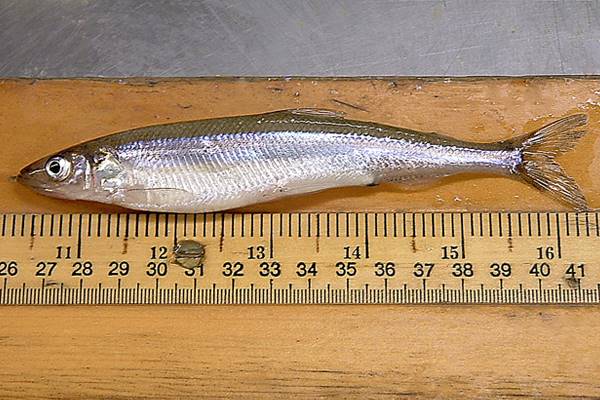The Great Lakes rainbow smelt decline is complicated, models show
Rainbow smelt are an invasive species to the Great Lakes, but the fish have become important to food webs in the basin as they act as both predators and prey to many creatures living there. In recent years, a lag has developed between the number of smelt that hatch and those that actually make it to adulthood.
Scientists at Purdue University Extension, in collaboration with the U.S. Geological Survey, are trying to figure out what is causing the decline and engineered a study to dissect it. The first half of their investigation, recently published in the Journal of Great Lakes Research, used data collected during an annual fall trawl survey across all the Great Lakes that was overseen by the U.S. Geological Survey.
“Unfortunately, that’s where the cool field stuff ends,” said Zach Feiner, doctoral student at Purdue University in the Department of Forestry and Natural Resources. “These data then went into a computer model to determine how the abundance of young-of-the-year smelt — fish that hatched in the spring of the same year — related to the number of adult smelt.”
Those models spat out predictions of the number of offspring each parent smelt would generate based not only on the number of adult smelt, but also external variables like the biomass of potential predators, water levels, precipitation and winter severity. From there, Feiner and others added a tweak to the model: They allowed the relationship between the number of baby smelt and the number of adult smelt to change over time.

Rainbow smelt. (Credit: Purdue Department of Forestry and Natural Resources/James Roberts and Tomas Höök)
That change was key because most other models investigating smelt declines have held that the relationship between those life stages is a constant one. So the assumption was that adding a certain number more offspring would always yield more adult smelt, regardless of other factors.
“This expectation doesn’t really make sense in the Great Lakes because conditions change so much due to nutrient loading, fishing pressure, invasive species, et cetera, so that the relationship between offspring and adults might — and probably — looks very different now than it did 20 to 30 years ago,” said Feiner.
By using a more variable model, the researchers could explain a lot more changes in smelt recruitment than if they had assumed everything was constant. And they soon found that explaining the issue was increasingly complex.
“It seems that how juvenile and smelt interact with their environment has changed in such a way that more offspring per parent are surviving now than in the previous 20 years or so, which was pretty unexpected considering smelt abundance is on the decline,” said Feiner.
There are a few possible causes for this, says Feiner. Because Lake Michigan is getting clearer and warmer, both adult smelt and alewife, which prey on juvenile smelt, are being pushed to deeper waters offshore where they can’t eat them. That has led to an increase in offspring production there, but that hasn’t been enough to counteract the overall population decline.
The real punchline of the work, says Feiner, is that these interesting trends in smelt productivity are leading researchers to consider what other dynamics are being missed that drive the trends. For one, researchers looked at declining sizes in adult smelt, as well as their size when they start laying eggs.
“There are a number of studies that suggest larger females lay larger eggs which hatch larger, more fit offspring, so the expectation would be that smelt productivity would be going down,” said Feiner. “The fact that it is actually increasing in recent years really suggests that there are more complicated dynamics at play that are going to need further study to figure out.”

0 comments